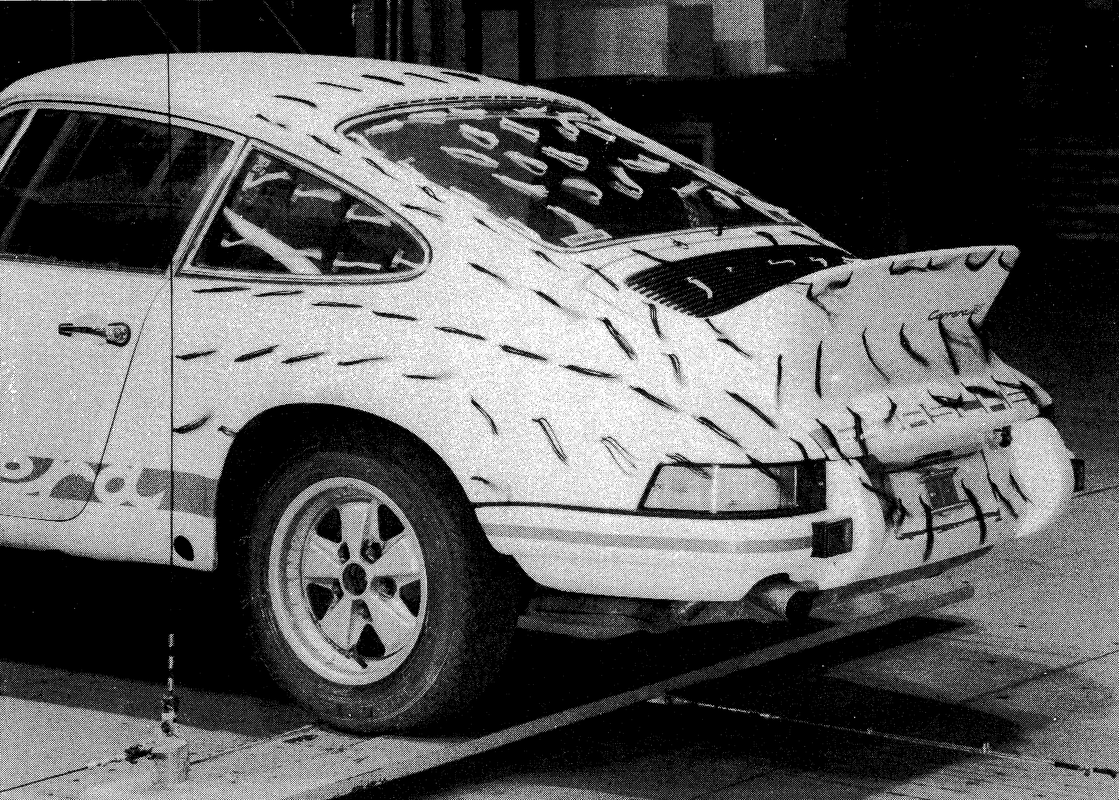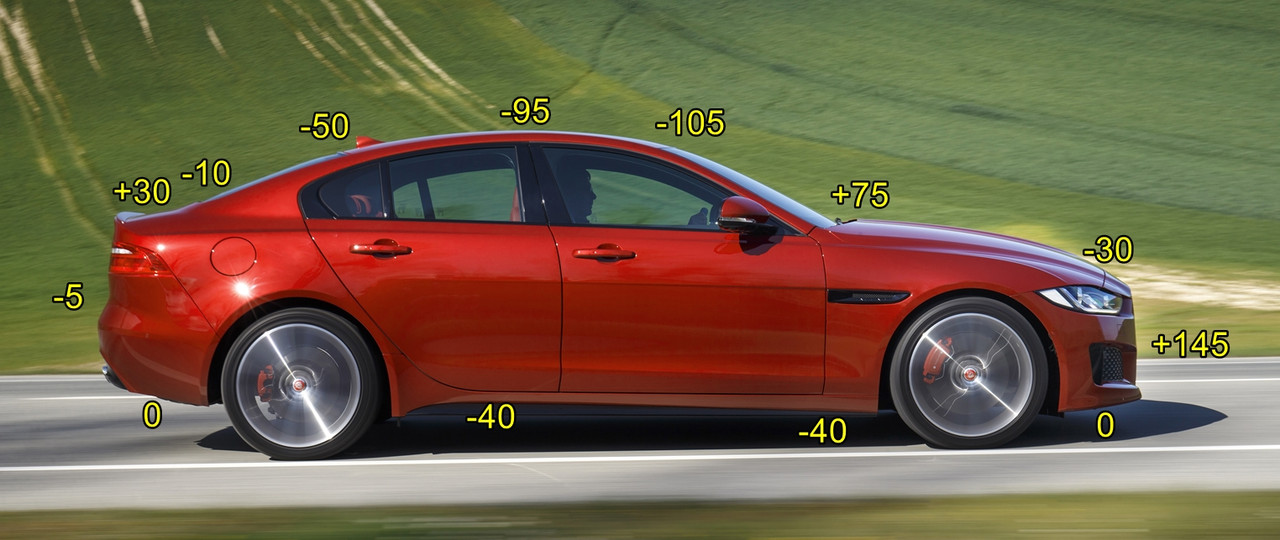Quote:
Originally Posted by JulianEdgar

That's all very complex, and I think it is in large part wrong. I don't have any emotional capital invested in defending a template - just as with closed/open wheels, I just report on what the research and my measurements show.
Porsche without rear spoiler, generating lots of lift. Note attached flow (not "implied fully attached flow") on roof down to tail:

Porsche with rear spoiler, generating less lift. Note separated flow:

Separating the flow caused less lift - the opposite of what you argue. (Of course that's where the word 'spoiler' originally came from - ie spoiling the attached flow.)
My actual pressure measurements on Jaguar XE. These measurements matched Jaguar's CFD very well, and were also endorsed by Jaguar's chief aerodynamicist. Note that whenever attached airflow wraps around upper curves, a low pressure (ie lift) is generated:
 The idea that lift is generated only by separated flow is simply not the case.
The idea that lift is generated only by separated flow is simply not the case.
It is misleading to constantly suggest that lift involves separated flow. The evidence does not support that statement. It may have been the case in the distant past where separation was much more common (eg at the end of the roof in 1960s sedans); it is not the case in today's cars where separation is delayed as late as possible.
And I reiterate: I have never seen any mention of The Template (or its equivalent shape) in any current aerodynamic technical literature on road cars.
There is no issue in upper surfaces generating low pressures if those are offset by low pressures generated under the car.
But look, the days when all this had to be argued by invoking obscure theory are now gone: just use the techniques I cover in my book to measure real pressures on real cars on real roads. When you do so, you will see that attached airflow wrapping over upper curves generates low pressures (ie lift) - and that's hardly a surprise. Measurement, not theory. |
*We know that all wings can produce zero lift.Yes? (I gave you 118 examples).
*The lowest pressure on an automobile occurs just ahead of the windshield header.
*All the air on the car would like to go to the low pressure area near windshield header.
*On the aft-body,the only reason air isn't flowing forwards to the windshield header is because kinetic energy from inviscid flow is attacking and energizing the TBL, all the way to the body 'wall.'
*If the aft-body slope exceeds 22-23-degrees,the inviscid flow can no longer impart enough energy to the TBL to prevent stall,reversion,eddy formation,then full-blown turbulence.The air at the wall boundary is already at rest.The pressure rise presented by the radical downslope would demand (from the Bernoulli Theorem) that the flow decelerate.Since the flow at the wall is already zero,that's impossible. Which results in counterflow on the roof,moving forwards towards the windshield,rolling up into eddies,then turbulence,lifting off the roof as separation.At this point the flow is lost and all the kinetic energy of the turbulence is converted to heat,through viscous attrition,downstream.
If the roofline were streamlined,there'd be no separation,no turbulence,no lost energy.
Smoke flow images of the 911 would really help. Beetle images clearly show the separation. Smoke flow images of the Volkhart V2 Saggitta,very similar to the 1939 Porsche 60K10 also show the separation.
I believe that you'd see the separation on the 911,you'd see the attached longitudinal vortices,which would explain the illusion of 'attached flow' with the tufts.
The roof acts as a deceleration ramp,allowing the air to resume its position and original,local barometric pressure as it possessed before encountering the car in the first place.
With a streamlined roof,the air would be at the same pressure as the nose,minus the skin friction loss. This high pressure,'slow' air would not generate the lift as one might imagine and it's the reason Volkswagen Group no longer builds a car like the 1st-gen 911.
A spoiler spoils lift.Lift is a function of low pressure acting 'over' a portion of the body.All separation should be at the back of the car. If it's not,it's in a lower pressure regime,as it's at a higher velocity.The closer you get to the windshield the lower the pressure and the higher the lift.
All streamline filaments about the body are isoenergetic. They possess exactly the same amount of energy.They can be mostly high velocity and low pressure, visa versa,or somewhere in between.
I recommend you review your text on fluid mechanics or Hucho's treatment of it in his second edition. It's imperative that you understand Bernoulli.